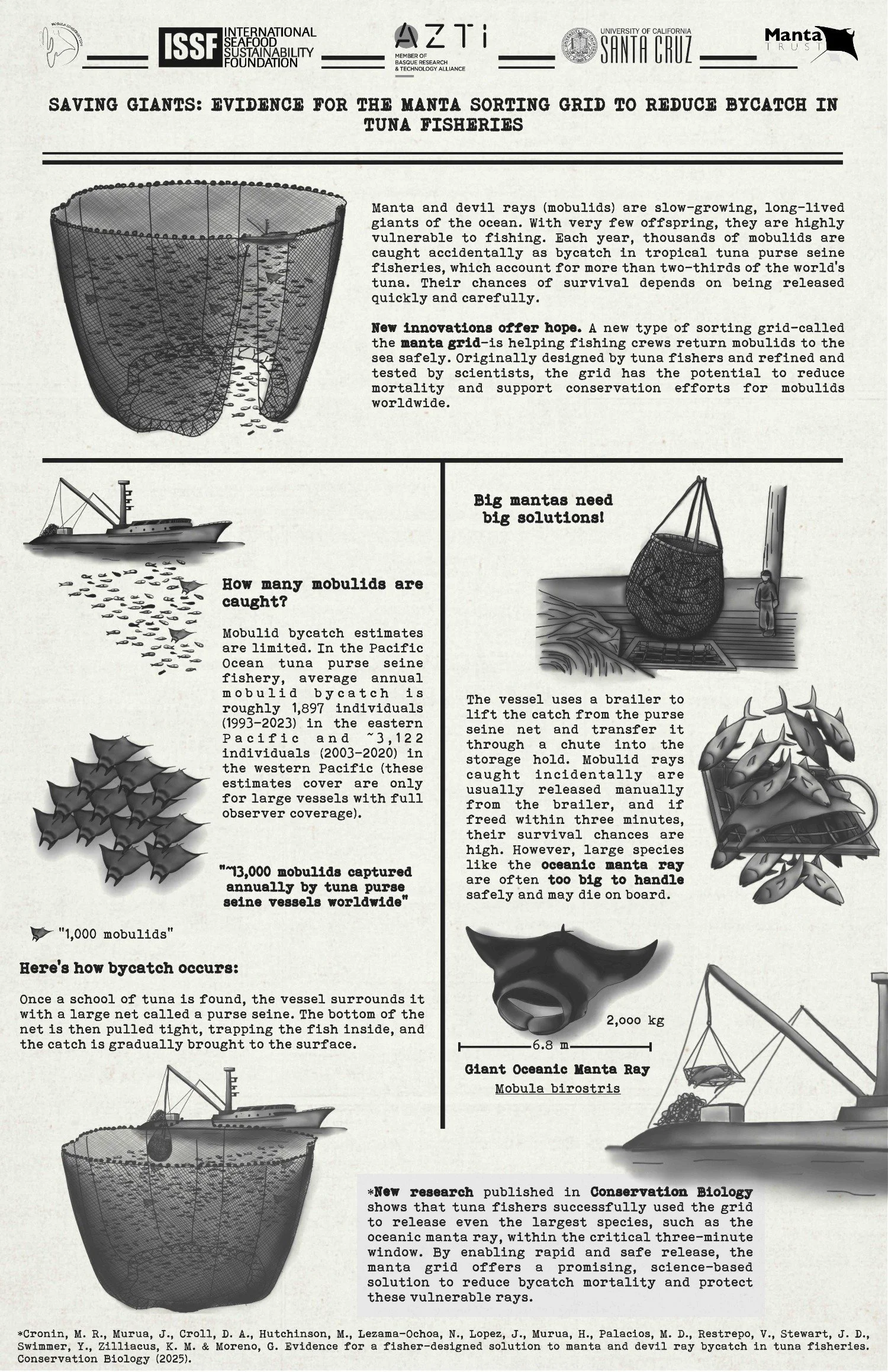Evidence for a fisher-designed solution to manta and devil ray bycatch in tuna fisheries
October 2025
Melissa R. Cronin, Jefferson Murua, Donald A. Croll, Melanie Hutchinson, Nerea Lezama-Ochoa, Jon Lopez, Hilario Murua, Marta D. Palacios, Victor Restrepo, Joshua D. Stewart, Yonat Swimmer, Kelly M. Zilliacus & Gala Moreno
Keywords: Conservation • Devil Ray • Elasmobranch • Fisheries • Handling and Release Practices • Manta Ray • Sorting Grid • Tropical Tuna Purse Seine Fishery • Knowledge Co-Production





Summary: Bycatch from tropical tuna purse seine fisheries causes high mortality in threatened manta and devil rays (mobulids). Effective, practical, and safe handling methods are vital for large-scale implementation. This study, led by our affiliate project Mobula Conservation, assessed a new mobulid bycatch release device, a sorting grid, on 12 vessels, recording 41 capture events. Mobulids released via the grid were significantly larger than those released by other methods, yet handling time remained short (around three minutes). The sorting grid therefore allows rapid release of even the largest individuals. Broad adoption, supported by regional fisheries management, could standardise best practices and greatly enhance mobulid survival and overall bycatch reduction.
Abstract
“Bycatch in global tropical tuna purse seine fisheries represents a significant source of mortality for manta and devil rays (mobulids), which are globally threatened. Use of best handling and rapid release practices on purse seine vessels can substantially reduce mortality and improve vulnerability status for mobulids. However, interventions must be effective, operationally feasible, and safe for human operators if they are to be successfully implemented at a large scale. We assessed the feasibility and efficacy of an innovative mobulid bycatch release device (sorting grid) in collaboration with captains and crew of vessels in the tropical tuna purse seine fleet. We evaluated the size of individuals and duration of release when the sorting grid was used and compared these metrics with other release methods. Forty-one mobulid capture events occurred on 12 vessels. Mobulids released using the sorting grid were significantly larger than those released by other methods; yet, mean handling time remained short (∼3 min), suggesting that the device enables the rapid release of even the largest individuals. Widespread implementation and use of the mobulid sorting grid could help achieve conservation goals for threatened mobulid rays and may have broader bycatch reduction benefits. Adoption of sorting grid requirements by regional fisheries management organizations could standardize best practices and markedly improve the survival of released mobulid rays globally.”
Infographic
Author Affiliations
University of Massachusetts Dartmouth
Mobula Conservation
The Manta Trust
Duke University
AZTI Marine Research
University of California, Santa Cruz
Inter-American Tropical Tuna Commission
University of California, Santa Cruz
International Seafood Sustainability Foundation
Oregon State University
NOAA Fisheries
Funding
Smith Conservation Research Postdoctoral Fellowship
Cedar Tree Foundation; NOAA Pacific Islands Regional Office


